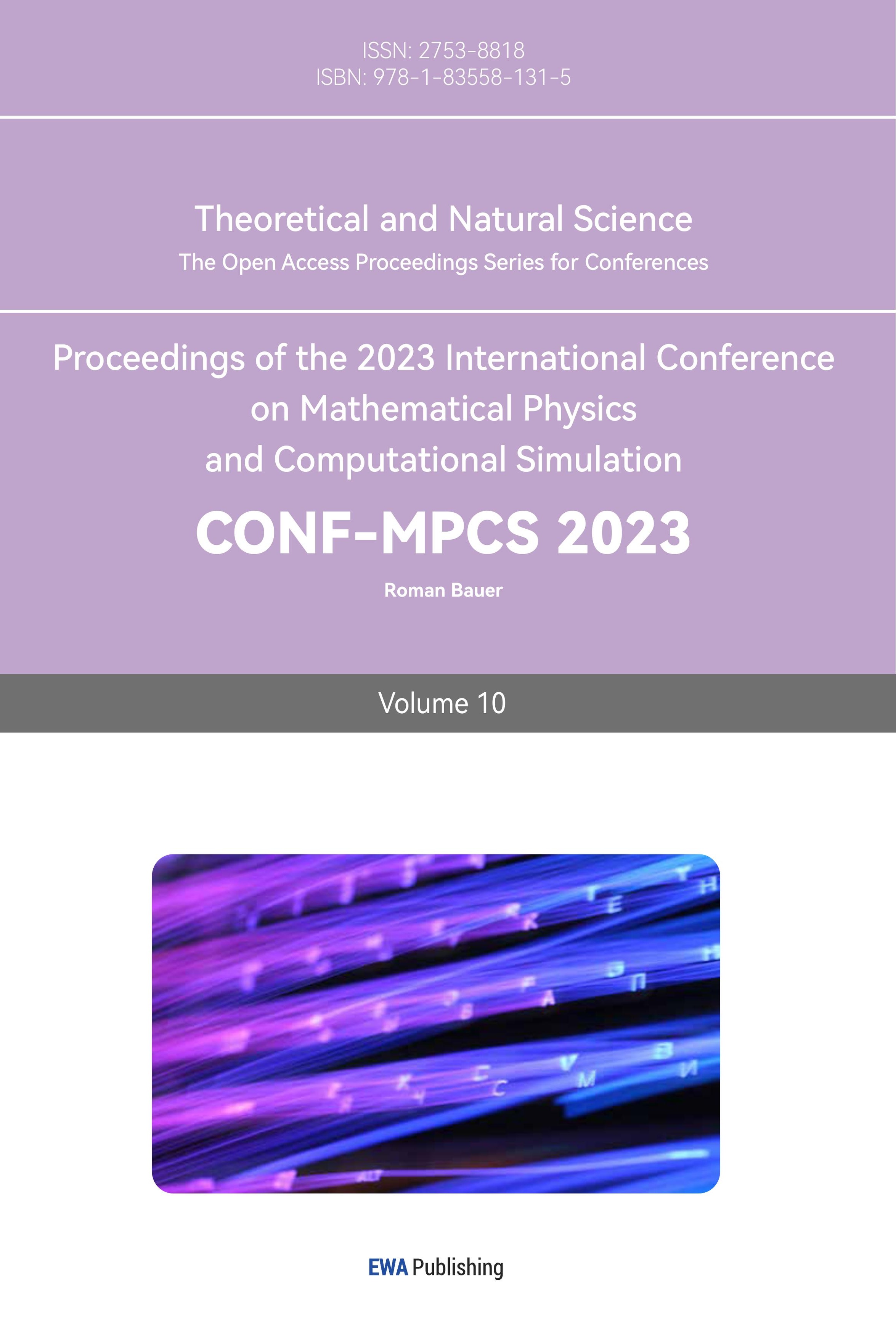References
[1]. Mariette M M, Clayton D F and Buchanan K L, 2021 Acoustic developmental programming: a mechanistic and evolutionary framework. Trends in Ecology & Evolution vol 36(8), pp. 722-736.
[2]. Mariette M M 2020 Acoustic Developmental Programming: implications for adaptive plasticity and the evolution of sensitive periods. Current Opinion in Behavioral Sciences, vol. 36, pp. 129-134.
[3]. Scheel H 2016 Next generation aircraft-A challenge for Interior Acoustics Developments. In INTER-NOISE and NOISE-CON Congress and Conference Proceedings vol 253(4), pp. 4666-4675.
[4]. Kukso O, Benisch M, Rascher R, et al. 2021 Acoustic measurements for optics Eighth European Seminar on Precision Optics Manufacturing. SPIE, vol 11853, pp. 96-106.
[5]. Zuo Z 2021 Research on piano sound color recognition and electron synthesis system based on Fourier analysis method Automation Technology and Applications, vol 40(02), pp. 137-140 +147.
[6]. Lv Z, Liu P, Ding Y, et al. 2021 Implementing fractional Fourier transform and solving partial differential equations using acoustic computational metamaterials in space domain. Acta Mechanica Sinica vol 37, pp. 1371-1377.
[7]. Gao W, Li B 2021 Convolution theorem involving n-dimensional windowed fractional Fourier transform. Science China Information Sciences vol 64(6), p. 169302.
[8]. Ghazouani S and Sahbani J 2022 Canonical Fourier-Bessel transform and their applications Journal of Pseudo-Differential Operators and Applications, vol 14, p. 1.
[9]. Wei D, Sang M, Yu M, et al. 2021 MEMS acoustic thin film defect detection algorithm based on frequency domain transformation Applied Optics, vol 42(06), pp. 1086-1091.
[10]. Kong M 2020 Spectrum detection and application based on the optical Fourier transform Beijing Jiaotong University.
[11]. Fei H 2022 Deep learning-based sound event classification and location detection study Jiangnan University.
[12]. Jutamulia S and Song F 2007 Fourier transform optics and its frontier applications. Journal of Quantum Electronics vol 1, p. 122.
Cite this article
Wen,Q. (2023). Fourier transformation for acoustic: Principle & applications. Theoretical and Natural Science,10,115-122.
Data availability
The datasets used and/or analyzed during the current study will be available from the authors upon reasonable request.
Disclaimer/Publisher's Note
The statements, opinions and data contained in all publications are solely those of the individual author(s) and contributor(s) and not of EWA Publishing and/or the editor(s). EWA Publishing and/or the editor(s) disclaim responsibility for any injury to people or property resulting from any ideas, methods, instructions or products referred to in the content.
About volume
Volume title: Proceedings of the 2023 International Conference on Mathematical Physics and Computational Simulation
© 2024 by the author(s). Licensee EWA Publishing, Oxford, UK. This article is an open access article distributed under the terms and
conditions of the Creative Commons Attribution (CC BY) license. Authors who
publish this series agree to the following terms:
1. Authors retain copyright and grant the series right of first publication with the work simultaneously licensed under a Creative Commons
Attribution License that allows others to share the work with an acknowledgment of the work's authorship and initial publication in this
series.
2. Authors are able to enter into separate, additional contractual arrangements for the non-exclusive distribution of the series's published
version of the work (e.g., post it to an institutional repository or publish it in a book), with an acknowledgment of its initial
publication in this series.
3. Authors are permitted and encouraged to post their work online (e.g., in institutional repositories or on their website) prior to and
during the submission process, as it can lead to productive exchanges, as well as earlier and greater citation of published work (See
Open access policy for details).
References
[1]. Mariette M M, Clayton D F and Buchanan K L, 2021 Acoustic developmental programming: a mechanistic and evolutionary framework. Trends in Ecology & Evolution vol 36(8), pp. 722-736.
[2]. Mariette M M 2020 Acoustic Developmental Programming: implications for adaptive plasticity and the evolution of sensitive periods. Current Opinion in Behavioral Sciences, vol. 36, pp. 129-134.
[3]. Scheel H 2016 Next generation aircraft-A challenge for Interior Acoustics Developments. In INTER-NOISE and NOISE-CON Congress and Conference Proceedings vol 253(4), pp. 4666-4675.
[4]. Kukso O, Benisch M, Rascher R, et al. 2021 Acoustic measurements for optics Eighth European Seminar on Precision Optics Manufacturing. SPIE, vol 11853, pp. 96-106.
[5]. Zuo Z 2021 Research on piano sound color recognition and electron synthesis system based on Fourier analysis method Automation Technology and Applications, vol 40(02), pp. 137-140 +147.
[6]. Lv Z, Liu P, Ding Y, et al. 2021 Implementing fractional Fourier transform and solving partial differential equations using acoustic computational metamaterials in space domain. Acta Mechanica Sinica vol 37, pp. 1371-1377.
[7]. Gao W, Li B 2021 Convolution theorem involving n-dimensional windowed fractional Fourier transform. Science China Information Sciences vol 64(6), p. 169302.
[8]. Ghazouani S and Sahbani J 2022 Canonical Fourier-Bessel transform and their applications Journal of Pseudo-Differential Operators and Applications, vol 14, p. 1.
[9]. Wei D, Sang M, Yu M, et al. 2021 MEMS acoustic thin film defect detection algorithm based on frequency domain transformation Applied Optics, vol 42(06), pp. 1086-1091.
[10]. Kong M 2020 Spectrum detection and application based on the optical Fourier transform Beijing Jiaotong University.
[11]. Fei H 2022 Deep learning-based sound event classification and location detection study Jiangnan University.
[12]. Jutamulia S and Song F 2007 Fourier transform optics and its frontier applications. Journal of Quantum Electronics vol 1, p. 122.









